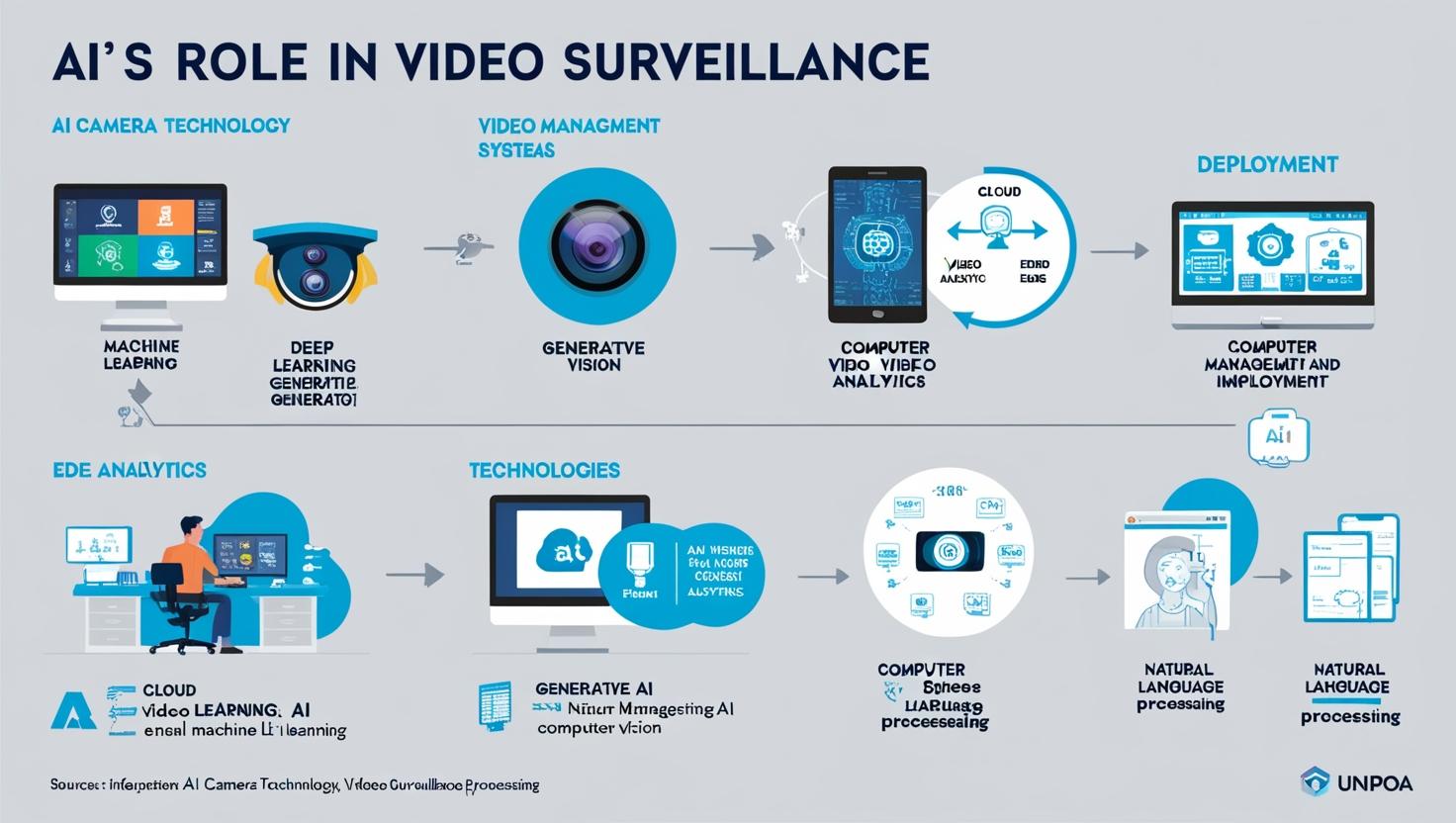The integration of artificial intelligence (AI) into video surveillance is reshaping the way security systems operate across the globe. Traditional surveillance relied heavily on human operators to monitor camera feeds, a process that is both labor-intensive and prone to human error. AI technology now enables automated analysis of video data, allowing systems to detect and respond to threats in real time with greater precision and speed.
Revolutionizing Real-Time Monitoring
At the heart of AI’s impact on video surveillance is its ability to process and analyze vast amounts of video footage instantaneously. Unlike conventional systems where human operators might miss critical events due to fatigue or distraction, AI-powered surveillance platforms continuously scan for anomalies. These platforms can recognize patterns and flag behaviors that deviate from the norm, such as unusual movements or unauthorized presence in restricted areas. This real-time intelligence allows security teams to intervene promptly, preventing potential incidents before they escalate.
Download PDF Brochure @ https://www.marketsandmarkets.com/pdfdownloadNew.asp?id=84216922

Advanced Facial Recognition and Identification
One of the most prominent applications of AI in video surveillance is facial recognition. Powered by deep learning algorithms, facial recognition systems compare live video feeds against large databases to identify individuals with remarkable accuracy. This technology is increasingly used in high-security environments such as airports, government buildings, and corporate campuses. Beyond identifying people, AI can also recognize other objects, such as unattended packages or vehicles, further enhancing security protocols by detecting possible threats that would be difficult for human monitors to spot.
Predictive Analytics and Proactive Security
AI’s transformative potential extends beyond just identifying current threats. By analyzing historical surveillance data, AI systems develop predictive models that forecast when and where incidents are most likely to occur. This predictive capability enables organizations to take a proactive approach to security, allocating resources more efficiently and preventing breaches before they happen. For example, AI can identify patterns of suspicious behavior leading up to theft or vandalism, alerting security personnel to intervene early.
Reducing False Alarms and Optimizing Resources
A major challenge with traditional video surveillance has been the high frequency of false alarms caused by harmless events such as animals moving or changes in lighting. These false alarms consume valuable time and resources, as security teams must investigate each alert. AI dramatically reduces false positives by distinguishing between genuine threats and benign activity. This improvement not only optimizes resource use but also enhances overall system reliability and trustworthiness.
Addressing Privacy and Ethical Concerns
While AI-driven video surveillance offers significant benefits, it also raises important ethical questions and concerns regarding privacy. The ability of AI to track individuals and analyze personal data demands careful regulation to prevent misuse and protect civil liberties. Governments and organizations must establish transparent policies and adhere to strict data protection standards to ensure that AI surveillance technologies are deployed responsibly and fairly.
Looking Ahead: The Future of AI in Surveillance
The future of video surveillance is closely tied to the continued advancement of AI technologies. Emerging capabilities such as emotion detection, crowd behavior analysis, and integration with smart city infrastructure promise to create highly intelligent and adaptive security systems. These innovations will enable more comprehensive monitoring, providing deeper insights into security risks and enhancing public safety on a larger scale.
Artificial intelligence is revolutionizing the video surveillance industry by automating threat detection, improving accuracy, and enabling predictive security measures. This transformation is creating safer environments and more efficient security operations worldwide. However, the adoption of AI surveillance must be balanced with thoughtful consideration of privacy and ethical implications to ensure these powerful tools are used responsibly.
Investor FAQ: AI in Video Surveillance Market
1. Why is AI in video surveillance an attractive investment?
AI-powered video surveillance is rapidly transforming security by offering enhanced threat detection, operational efficiency, and cost savings. The global demand for smarter, automated security solutions is growing due to increasing security concerns and regulatory requirements, creating strong market growth potential.
2. What is the current market size and growth outlook?
The AI in video surveillance industry is projected to grow from USD 3.90 billion in 2024 to USD 12.46 billion by 2030, growing at a CAGR of 21.3% from 2025 to 2030, driven by advances in AI algorithms, increased adoption of smart city initiatives, and rising investments from both public and private sectors. Analysts predict significant growth over the next 5 to 10 years.
3. What are the key drivers fueling this market?
Major drivers include technological advancements in AI and machine learning, decreasing costs of hardware, increased need for public safety, and expanding applications across industries such as retail, transportation, and critical infrastructure.
